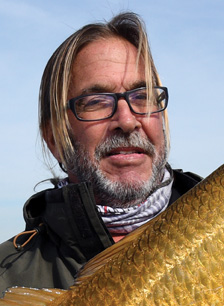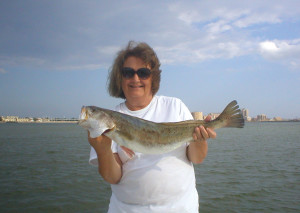 By Capt. David C. Dillman
By Capt. David C. Dillman
galvestonbaycharterfishing.com | 832-228-8012
When you are young, perils that laid before you seemed distant. You seldom had fear and nothing scared you. Death did not seem real. You were willing to try most things, even if it involved cheating death. Now that you are older, you hear yourself say, “how did I ever survive?”
Becoming a first time boat owner, you never think about the dangers. The boat gives you a sense of freedom and escape from the world — you become the king of the sea! My first boat was a center console 16 foot Monarch. I strictly fished East Galveston Bay, getting up in the wee hours of the morning, riding the Galveston ferry to the launch at Stingaree. There was a ramp and a drop box for the ramp fee at the time, nothing fancy. I fished every inch of East Bay in that boat.
I sold that boat and bought my first of three Pro-Lines, a 17 footer with a 115 Sea-Drive. After buying this boat, I ventured to Eagle Point Fishing Camp for the first time. Little did I know at the time, this would become my home for over 35 years.
Having no fear on my first outing, I was abruptly halted by a reef called Todd’s Dump. This was a wake up call that I needed to study and learn everything about this bay system, not just East Galveston Bay. Lucky for me the owner of Eagle Point, Johnny Valentino, took a liking to me as well as a couple of old timers that fished out of there for years. Luck never really played a part because God brings people into your life for a reason (Proverbs 3: 5-6). Under their guidance, I learned the area and the dangers to avoid. One of them the large wakes created by the ships.

This boat was capsized by a ship wake that came off Todd’s Dump.
I learned all about the dangers of the wakes by fishing the spoil banks and shell reefs that line the Houston/Galveston ship channel. Even with all my knowledge of how the ships are loaded and which ships will throw a large wake, you should never let your guard down.
One day when fishing with an “old salt” John and his brother, we did just that. Anchored up on what was the south end of Redfish Island, we were catching fish, being mindful of the passing ships. A small tanker was heading down the channel, we never saw a breaking wake as it passed the north end of Redfish Island. Thinking nothing of it, we continued to fish, then it was too late.
I looked back to the North and heard the roar of a breaking wave. We had no time to start the boat and turn the bow into the wave. The water being sucked from underneath the boat held the anchor tight as the wave broadsided us, nearly flipping the boat. We slammed back down just as the next wave filled the boat. We let out guard down but God saved us from a catastrophe. We managed to get the boat started, pulled anchor while underway to drain the water from the boat. Needless to say, we called it a day.
In the last couple years there have been a few people caught by these wakes with fatal results. Who is to blame? This can be debated whether it is the ship pilots traveling in excessive speed or the boater lacking knowledge or not paying attention. This time of year many anglers are fishing near the channel. Even those with experience can get caught in a dangerous situation. One must keep their “Head On A Swivel” at all times, never letting your guard down. One life lost is one too many.
I offer a boating class where I go in your boat and teach you how to navigate Galveston Bay. We can even fish as you learn. Many have taken advantage of the knowledge I have and in turn made their angling and boating experience more successful. Safety while boating should be your top priority, catching fish is just a bonus.


 By Capt. Joe Kent
By Capt. Joe Kent



